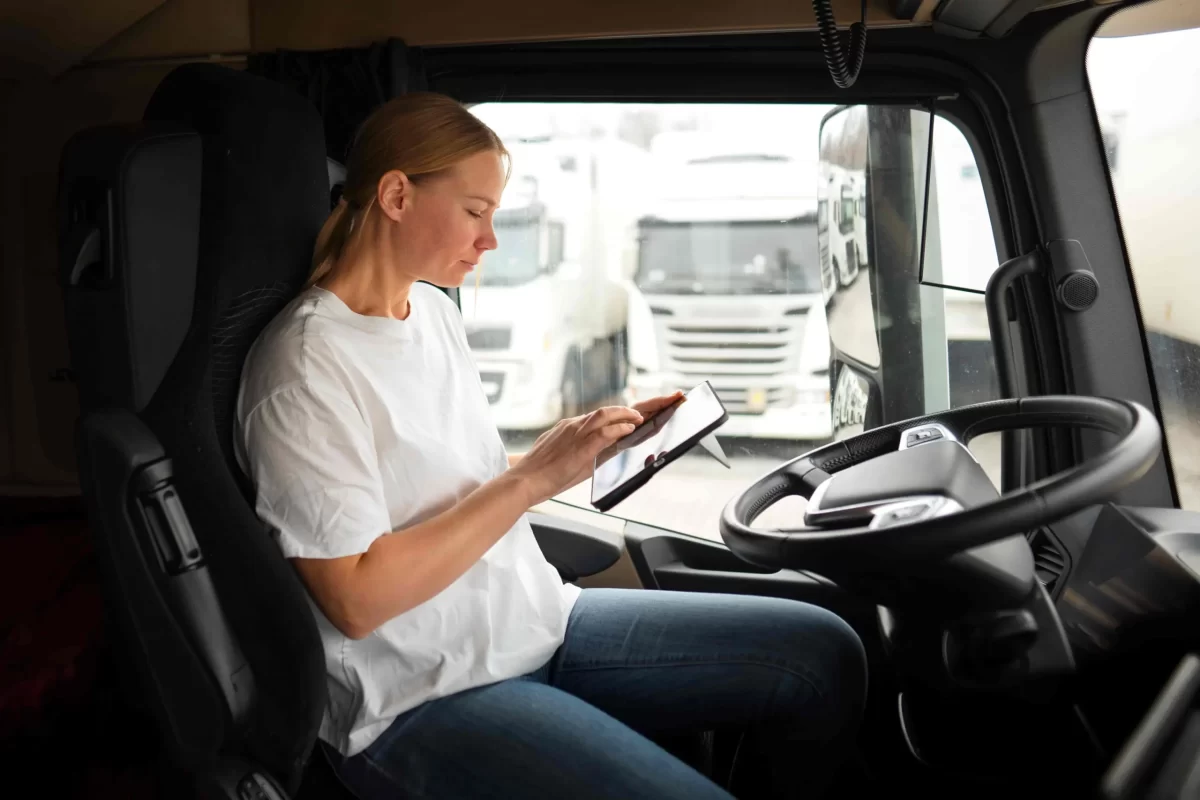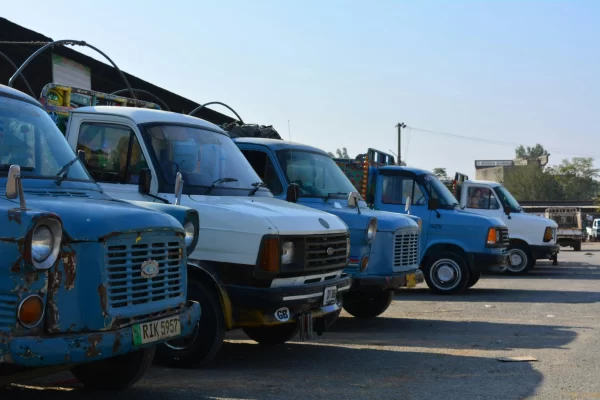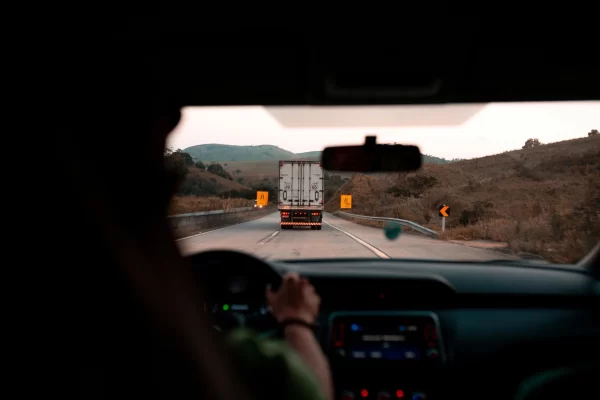The secret to keeping ahead is managing the performance of your fleet with actionable insights, such as those provided by a fleet tracking device. Monitoring your fleet performance with the appropriate tools is important, whatever your industry, especially for fleet operators trying to boost fuel efficiency and maintain an efficient fleet through better location tracking and real-time visibility.
From construction, shipping, and any other industry that involves the transport of products. Fleet telematics, offered by various telematics providers, supports teams that need to monitor usage, reduce risks from unauthorized vehicle use, improve operational efficiency, and track multiple vehicles without gaps. It’s the same as having a hidden weapon to improve fleet safety, speed up processes, and monitor driver behavior to increase production, focusing on driver safety monitoring.
But with so many vendors claiming the top spot, it’s not easy to know where to turn. Finding the right telematics supplier from several choices can feel like navigating a maze, especially when considering various GPS data tracking systems available.
In this article, we’re going into the fleet telematics industry to identify the top five players that have the best fleet telematics systems.
Get ready to uncover the cream of the crop in telematics fleet solutions now! Discover which of these cutting-edge technologies could change everything for you and how businesses all around the world are using them.
Let’s look into the possibilities for cost savings and operational excellence through optimizing efficient routes in your fleet management efforts.
The 5 Best Fleet Telematics Systems (Ranked)
1) Geotab
- Overall Score: 4.8/5
- Ease of Use: 4.7/5
- Safety & Coaching: 4.7/5
- Feature Breadth: 5.0/5
- Integrations & Ecosystem: 5.0/5
- Cost of Entry: 3.8/5
Pros
- Open, extensible ecosystem; scales from small to very large fleets.
- Mature hardware + rich diagnostics for high‑quality vehicle engine data.
- Strong analytics and sustainability toolset to drive measurable KPIs.
- Broad marketplace to tailor workflows and fill niche needs.
Cons
- Depth of analytics can add a learning curve without guided onboarding.
- Best practice: run a short pilot to tune dashboards and alerts.
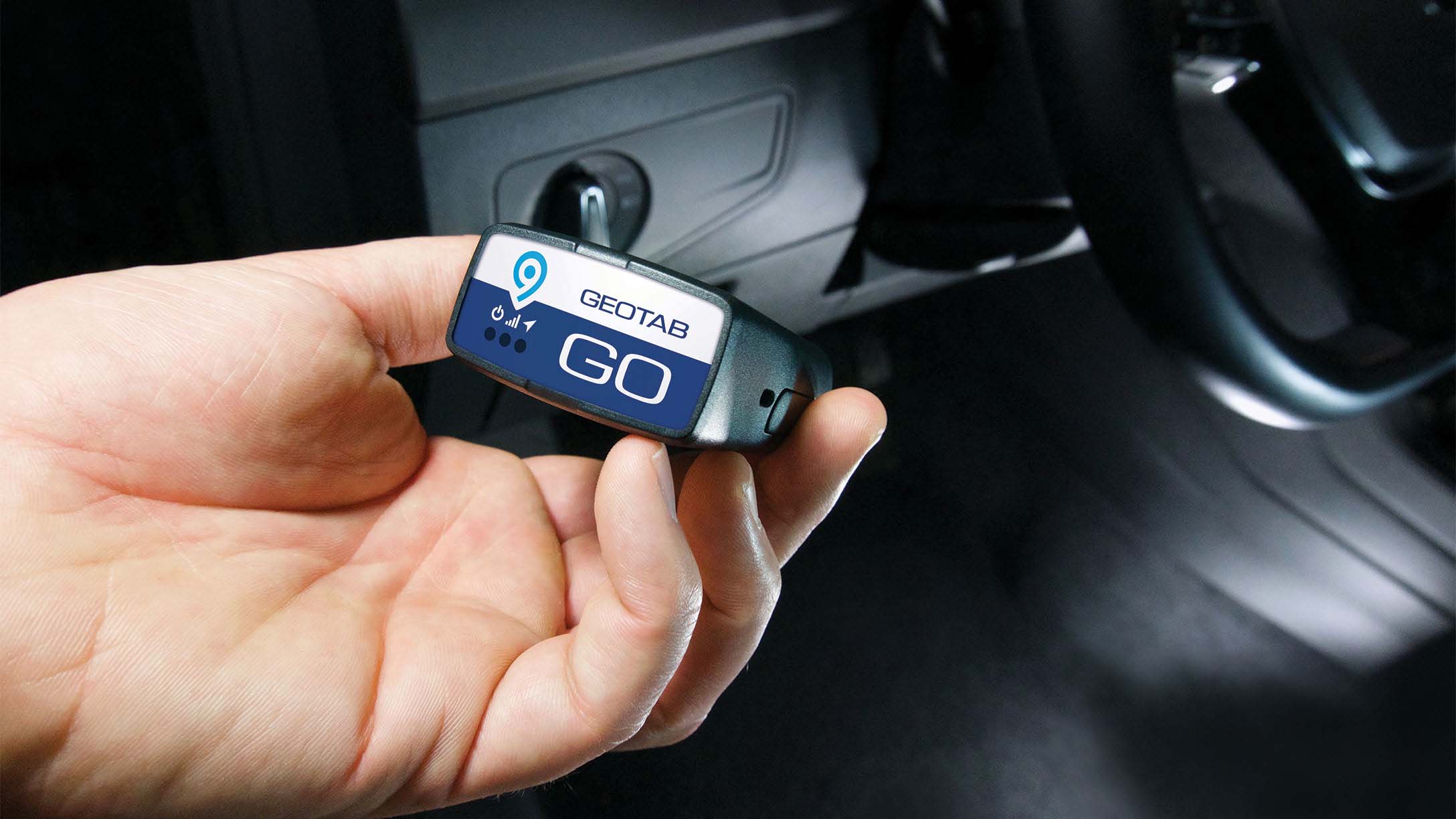
Scalable Telematics Built for Large Fleets
Geotab is the global benchmark in fleet telematics technology—with more than 4.7 million devices deployed across industries. It isn’t just a top vendor—it’s the standard many measures against, especially in areas of engine health, vehicle status, and engine fault codes reporting through deep diagnostics.
According to our most recent research, this Canadian company is dominating the fleet telematics space. After more than two decades in the video telematics industry, supply chain experts increasingly turn to them for advice. They have everything you might need in a fleet telematics solution that includes vehicle data analytics, GPS fleet tracking services, tracking vehicle health reports, and enhancing fleet efficiency, security, scalability, and complete dependability.
Industry-Leading Data & Sustainability Focus
According to 2024 industry reports, fleets utilizing Geotab’s safety and maintenance features have realized a 40% reduction in collision rates and improved fuel efficiency by reducing idling times by over 5%.
The real kicker is that Geotab focuses entirely on providing actionable data points that enables companies to make more informed decisions. Instead of just offering GPS, they pair comprehensive datasets with advanced data analytics to help teams analyze data tied to routing, maintenance, and safety outcomes.
They’re also big on sustainability. Geotab’s all about helping fleets go green, offering tools to reduce operating costs, and insights into engine diagnostics and vehicle diagnostics data for better vehicle utilization and improve vehicle maintenance tracking that help cut carbon emissions and save some serious cash in the process.
Sustainability Meets Innovation
One cool thing they’re doing is with their upgraded GO9+ telematics device. It’s like a little magic box with key features that keeps fleets connected via Wi-Fi for up to 4 hours, even when the engine’s off.
Talk about cutting down fuel usage and waste, slashing greenhouse gases, and giving those cellular connections a break while they’re out on the road. Using the GO9+ device, fleets also benefit from real-time vehicle diagnostics, which support teams trying to optimize maintenance schedules and cut vehicle downtime.
Through Traxxis GPS Solutions, you get full access to the Geotab platform: a system built to scale and fine-tune performance, no matter your fleet size. You get access not just to tech—but to the right maintenance tools and workflows needed to optimize operations.
Why Fleets Choose Geotab Through Traxxis:
- Built on one of the industry’s most trusted data platforms—designed to grow with your fleet, not restrict it
- It provides seamless connections, fewer silos, and more intelligent control from the beginning and is made to interact with your current process.
- Sets the standard for environmental reporting and EV preparedness, providing you with a clear route to reduced emissions and long-term benefits.
- Tools like the GO9+ device, which stays connected even with the engine off, improve data flow and reduce waste.
Traxxis makes the implementation seamless, offering full onboarding and support, so Geotab becomes not just a product—but a solution.
2. Azuga
- Overall Score: 4.6/5
- Ease of Use: 4.5/5
- Safety & Coaching: 4.6/5
- Feature Breadth: 4.6/5
- Integrations & Ecosystem: 4.2/5
- Cost of Entry: 4.0/5
Pros
- Behavior‑based safety with coaching/gamification that changes culture fast.
- Quick, low‑friction rollout; straightforward role‑based dashboards.
- Strong value for fleets prioritizing safety outcomes.
Cons
- Contract flexibility can be limited vs. month‑to‑month options.
- Smaller integration marketplace vs. open‑platform leaders.
- Occasional coverage/location hiccups in fringe areas (mitigated by install/testing).
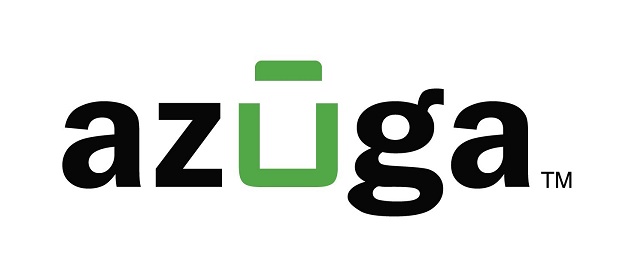
Putting Drivers at the Center of Telematics Strategy
For fleets that believe safety starts behind the wheel—not just under the hood—Azuga delivers a focused, behavior-aware platform. At its core, Azuga isn’t just about dots on a map or trip logs. It’s about how people drive, how teams improve, and how habits shift over time.
Traxxis GPS Solutions provides Azuga as a turnkey option for organizations that want a practical, accessible system that also builds a culture of accountability on the road.
Why Azuga Works for Real-World Fleets
Azuga tracks the moments that matter: rapid acceleration, hard braking, sharp turns, and extended idling—flagging the patterns before they become liabilities. But instead of stopping at alerts, the system leans into improvement with built-in driver coaching designed to help managers coach drivers consistently using in-app tools and coaching prompts. Think in-app coaching, performance gamification, and reward systems that reinforce better driving day by day.
Azuga’s gamified approach prevents accidents. Data shows that a 10-point increase in a driver’s safety score correlates to a 57.4% reduction in accident risk. Furthermore, fleets using Azuga’s maintenance alerts have seen up to a 20% reduction in vehicle downtime, keeping trucks on the road where they generate revenue.
The platform doesn’t require a tech overhaul to get started. The hardware installs fast. The dashboards adapt to how your team already works. And the reporting tools? Built for clarity, not complexity.
Fast Start. Long-Term Shift.
Azuga is especially effective for mixed-use fleets—delivery, services, utilities—where managers need to oversee safety trends and respond in real time. And because every fleet looks different, Traxxis helps tailor Azuga to match your operating structure, training approach, and risk profile to enhance driver safety.
From initial setup to ongoing optimization, Traxxis doesn’t just provide GPS fleet tracking solutions like Azuga—we configure it to work for you.
What Fleets Gain with Azuga + Traxxis
- Behavior-based alerts for speeding, idling, and harsh events
- In-app tools for live coaching and safety reinforcement
- No-hassle installation and rollout across fleet types
- Custom dashboards based on real operational roles and routes
Azuga is for fleets that see telematics not just as tracking, but as a transformation. With Traxxis, that shift starts without disruption and continues with insight. Organizations can integrate Azuga with fuel programs using fuel card data, tighten compliance controls, and ensure data security across all driver and vehicle records.
Ready to Take Control of Your Fleet?

If you’re looking for a telematics partner that delivers clarity, reliability, and results, without the noise. Traxxis GPS Solutions is built for you with the best fleet management solutions and platform. Whether you’re running 10 vehicles or 1,000, we help you track smarter, drive safer, and spend less.
Most fleets don’t fail because they chose the wrong software; they fail because implementation was too hard. While you can buy direct from manufacturers, working with a specialized partner like Traxxis ensures the system actually fits your operations from Day 1.
| Feature | Buying Direct (Self-Service) | Partnering with Traxxis GPS |
| Setup & Configuration | Generic “out of the box” settings; requires your IT time. | Custom-configured rules, reports, and dashboards built for your specific workflow. |
| Support Response | Standard Tier 1 call centers (often 24-48 hr wait). | Direct access to dedicated account managers who know your business. |
| Hardware Strategy | Standard shipping; you manage inventory and installation. | Staged & kitted deployment; we coordinate professional installation around your schedule. |
| Driver Training | Generic PDFs and video links. | Live training sessions (web or onsite) to ensure driver buy-in and correct usage. |
| Contract Flexibility | Standard rigid terms (typically 36 months). | Flexible options tailored to your budget cycles and fleet growth. |
Let’s streamline your fleet. Talk to Traxxis today!
3) Verizon
- Overall Score: 4.4/5
- Ease of Use: 4.3/5
- Safety & Coaching: 4.4/5
- Feature Breadth: 4.5/5
- Integrations & Ecosystem: 4.1/5
- Cost of Entry: 3.6/5
Pros
- Broad, enterprise‑ready feature set with near‑real‑time visibility.
- Strong operational dashboards and reporting across industries.
- Backed by extensive connectivity/IoT infrastructure.
Cons
- Quote‑based pricing; multi‑year terms are common.
- Can feel complex without a guided configuration and training plan.
Built-In Versatility for Every Fleet
Verizon Connect is the fleet telematics division of Verizon Business, offering a range of GPS tracking and resource management tools for different fleet sizes. Based in New Jersey, the company has developed several GPS tracking software options that include real-time vehicle tracking, route planning, and driver behavior monitoring.
Enterprise-Level Support with Local Flexibility
With support from Verizon’s broader infrastructure—such as connectivity services, cloud tools, and IoT integrations—Verizon Connect provides a range of features designed to streamline operations. Tools like real-time dashboards, vehicle status and benchmarking systems support operational visibility and planning across industries.
Established Footprint in Commercial Telematics
Verizon Connect maintains a large user base across multiple regions, supported by integrations that align with both compliance needs and basic fleet performance metrics. The platform includes video capabilities, mobile apps, and system alerts intended to assist with safety, tracking, and fleet oversight.
4) Solera
- Overall Score: 4.2/5
- Ease of Use: 4.1/5
- Safety & Coaching: 4.3/5
- Feature Breadth: 4.4/5
- Integrations & Ecosystem: 4.0/5
- Cost of Entry: 3.2/5
Pros
- Advanced video safety + driver‑risk monitoring and MVR/license checks.
- Enterprise‑grade telematics heritage and broad asset visibility.
- Strong fit where risk reduction and compliance are primary KPIs.
Cons
- Portfolio breadth can add licensing and deployment complexity.
- Pricing is typically enterprise/quote‑based with longer terms.
- Cross‑product integrations may require added configuration.
Safety-First Solutions for Fleets
Alright, let’s talk about Solera, a big player in the fleet telematics scene based out of Texas. These folks are all about keeping drivers safe, especially in the trucking biz, backed by their reliable customer support. Now, when it comes to their fleet management tracking tools, they’ve got quite the lineup.
Powerful Tools for Full-Fleet Visibility
- First off, there’s eDriving’s “Mentor” solution. It’s all about keeping an eye on driver risks, and it’s won some awards for being pretty darn smart. Using smartphone sensors and GPS, eDriving keeps tabs on driver behavior to spot any potential crash risks.
- Then there’s FleetLocate, which is like having a constant watch on your entire fleet itself. It’s super handy, enabling fleet managers to have real-time updates on everything from assets to drivers, even if they’ve got a mix of different vehicles. Solera also got its hands on Omnitracs, a top-notch fleet management platform. Using Omnitracs as part of their toolkit, their focus is on optimizing routes and controlling delivery up to the final mile.
- Next is SmartDrive, which makes use of advanced artificial intelligence (AI) and video technology for driver behavior monitoring and improving fleet performance. They even came up with SmartDrive Protect, which helps clear drivers’ names after accidents and gives props for safe driving. And we can’t forget about Spireon Trailer Tracking. Thanks to Solera, they’ve got all the goods for tracking trailers in real-time and crunching all kinds of real-time data.
- Last but not least, Solera’s tool for monitoring driver performance, safety, and compliance on the road is a single platform called SuperVision. With so many tools at their disposal, Solera is radically changing the fleet telematics industry and providing businesses with the information they require to maintain the efficiency and safety of their fleets. Thus, reducing fuel costs from constant vehicle maintenance alerts, and extending the lifecycle of your fleet vehicles.
5) Samsara
- Overall Score: 4.1/5
- Ease of Use: 3.9/5
- Safety & Coaching: 4.1/5
- Feature Breadth: 4.2/5
- Integrations & Ecosystem: 3.9/5
- Cost of Entry: 3.1/5
Pros
- Very intuitive UI; AI‑assisted video safety; polished out‑of‑the‑box experience.
- Unified platform across tracking, cameras, sensors, and workflows.
- Solid developer tooling for common integrations.
Cons
- Longer standard contract terms and relative price premium in many quotes.
- Some advanced capabilities are add‑ons, impacting TCO.
- Open‑ecosystem depth/vendor‑neutrality not as expansive as Geotab’s.
Samsara has quickly gained market traction in recent years, drawing attention with its slick interfaces and IoT-first approach. It’s particularly popular among tech-forward teams aiming to consolidate hardware and software.
Samsara’s system combines vehicle tracking, dashcams, and cloud-based reporting into a single platform. While some fleets explore it for its unified ecosystem, others weigh it against alternative options depending on operational goals, data preferences, or support requirements. As with any technology decision, alignment with business needs remains key.
Considerations When Choosing a Fleet Telematics System
With the list above, you have a good starting point. But it helps to have a guide to help you make a well-informed decision when deciding which fleet telematics system to go for.
Here are some considerations you can use as a basis when choosing a fleet management system:
1) Compliance & Legal
If you operate in the U.S., confirm your vendor supports the FMCSA ELD Rule and related recordkeeping (see the official FMCSA ELD portal). Review Hours‑of‑Service workflows and audit logs, and assess your data‑retention policy and privacy controls against recognized frameworks such as the NIST Privacy Framework.
2) Total Cost of Ownership (TCO)
Expect typical software pricing in the $10–$45 per vehicle/month range depending on features and bundle depth (see independent roundups from Forbes Advisor and Business.com). Factor in hardware, installation, video safety add‑ons, and potential hidden fees. Smaller fleets benefit from transparent tiers and “only‑what‑you‑need” bundles.
3) Contracts, Trials & Term Flexibility
Many providers still quote ~36‑month terms—scrutinize renewal and cancellation language and negotiate pilots where possible (Business.com pricing overview). Prefer vendors that offer shorter terms, rolling monthly, or a free trial so you can validate fit before committing.
4) Must‑Have Features
List down the features you must have in your system. Some that we recommend you should have include:
- Geofencing for zone alerts, SLAs, and yard/security controls; customer‑facing benefits from real‑time information are documented in USDOT’s ITS evaluations (ITS Benefits).
- Vehicle health & diagnostics to surface DTCs, battery issues, and engine faults early (context on On‑Board Diagnostics (OBD)).
- Maintenance scheduling tied to engine hours/odometer reduces unplanned downtime; pair with idle‑reduction policies to cut fuel waste (DOE AFDC: Idle Reduction Basics and Benefits).
5) Safety & Driver Management
Prioritize event detection and coaching around speeding, harsh braking, distraction, and fatigue—behaviors linked to crash risk per NHTSA. Look for role‑based dashboards, in‑app coaching, and configurable alerts to reinforce safer driving.
6) Implementation & Onboarding
Most modern platforms are cloud‑based, so rollout focuses on plug‑and‑play hardware plus user training (see the NIST definition of cloud computing). Align deployment with your change‑management plan and data governance standards; define owners, milestones, and success metrics up front.
7) Outcomes & ROI
Tie features to measurable improvements—fuel burn, incident rates, on‑time performance, and CSAT. Location visibility and real‑time ETAs materially improve customer experience (USDOT ITS Benefits), while idle‑reduction and routing wins lower operating costs (DOE AFDC) and support sustainability targets (EPA SmartWay).
How Traxxis helps: We scope requirements, set up a pilot, and implement with clear roles and training so your team realizes value faster—whether you roll out Geotab for scale or Azuga for behavior‑based safety.
Frequently Asked Questions (FAQs)
What are fleet telematics companies?
Fleet telematics companies can be compared to the invisible wizards of fleet management. They monitor vehicle usage and things like vehicle location, speed, and driver performance using sophisticated technologies. They’re the go-to guys for keeping fleets running smoothly and safely.
How can fleet telematics improve driver and fleet safety?
Fleet telematics can boost driver safety by using data collection to provide real-time insights into driver behavior, like speeding or harsh braking. With this data on unsafe driving behaviors, companies can offer personalized training and coaching to help drivers improve their vehicle performance and ensure better fuel management to make the roads safer for everyone.
What do fleet managers do?
Fleet managers are kind of like the quarterbacks of the vehicle world. They handle everything from keeping the wheels rolling smoothly to figuring out the best routes with the help of GPS trackers. They’re the ones making sure the whole fleet runs like a well-oiled machine, all while watching those budget numbers.
How do telematics systems integrate with existing systems for fleet operations?
Most modern telematics data platforms offer APIs or software integrations that work with fleet management systems, ERP platforms, GPS fleet tracking systems, or logistics tools like Electronic Logging Devices. This allows businesses to centralize operations and reduce data silos using effective fleet management software.
Is telematics only useful for large fleets?
Not at all. While larger fleets often benefit from advanced analytics, small and mid-sized fleets can gain significant value in reducing operational costs through route optimization, real-time tracking, mileage tracking, reduced fuel consumption, and improved vehicle and driver performance monitoring from using telematics and integrated GPS tracking devices.
Final Thought
Fleet telematics brings real traction, enabled by modern telematics systems. The kind that lets managers respond faster, drivers perform better, and businesses scale without guesswork.
Across the board, systems like Geotab, Azuga, and Solera are shaping the way safety, visibility, and efficiency work together. But even the best platform is only as effective as its fit—how well it’s configured, supported, and aligned with the actual day-to-day of your fleet.
That’s where Traxxis GPS Solutions makes the difference. We don’t just hand over telematics tools and software—we help teams implement with purpose. Whether you’re rolling out driver behavior tracking with Azuga or using Geotab to future-proof a 500+ vehicle fleet, our job is to make the tools work harder for you.
It’s easy to promise results, but our partners see them in their bottom line.
“We invested in Traxxis GPS for our business, and after one month we saved over $3,000 in gasoline alone.” — Sy, President (Commercial Cleaning Service)
“Since installing the Traxxis GPS system, we have cut our fuel costs by more than 50%!” — Myra, General Manager (AC & Heating)
“When it comes to service and support, Traxxis GPS is the best.” — Nelson, VP (Transportation Company)
If you’re in the middle of fleet growth, rebuilding processes, or just tired of juggling disconnected systems, let’s make the next step more strategic.

